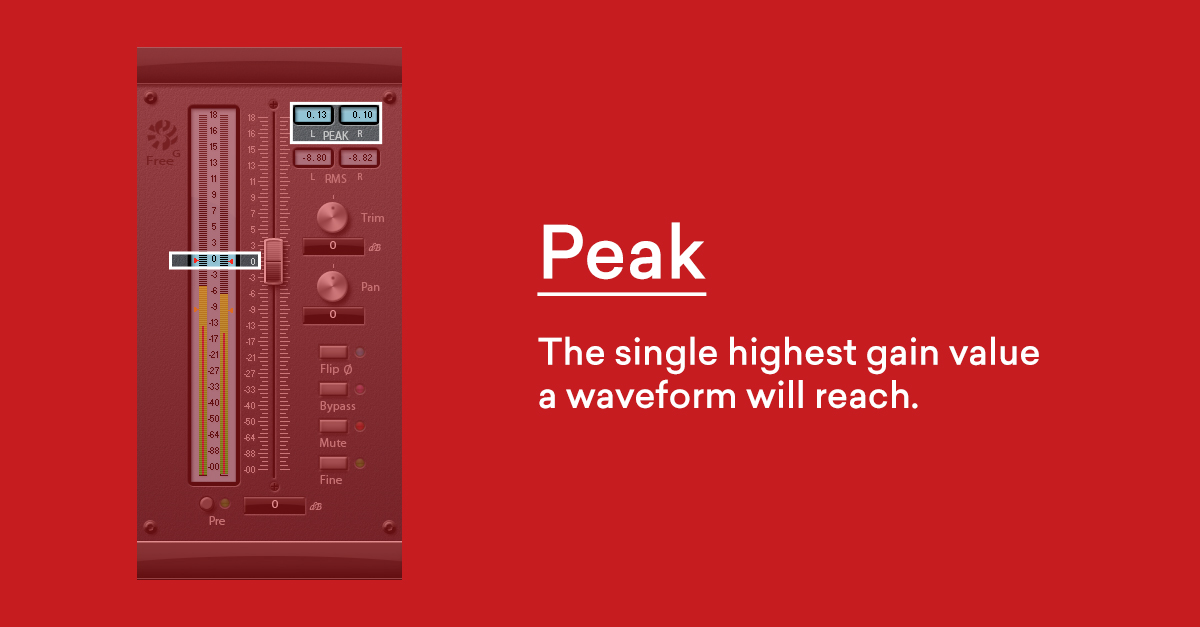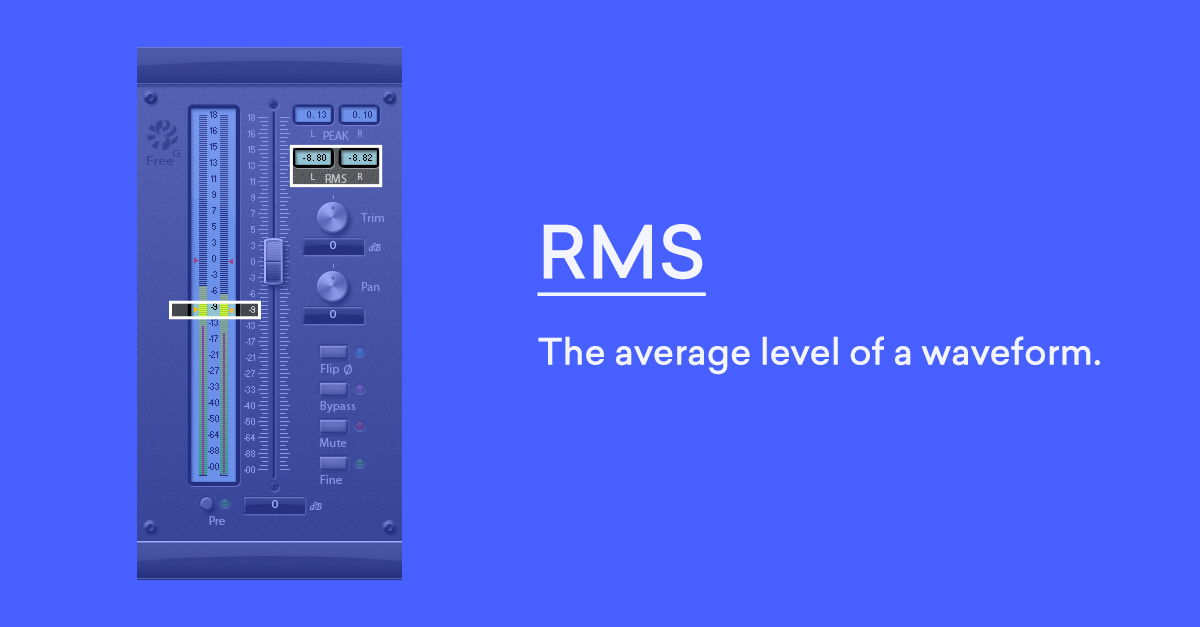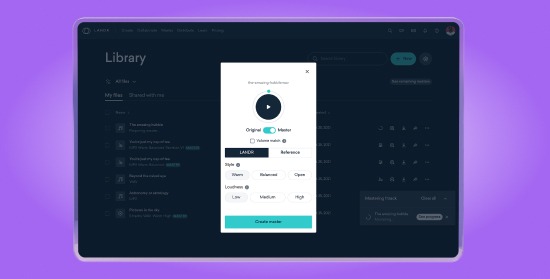
Loudness 101: How Mastering Levels Affect Your Sound

Loudness and dynamics are two of the most important concepts in mastering.
Mastering ensures your song is loud enough to compete in the marketplace of commercial tracks. And the biggest impact of the mastering process is loudness.
It’s seems like there are endless arguments about the loudness war going on in the pro audio community. So why is loudness such a big deal?
Some say loudness is killing music, but there’s plenty of pros out there still chasing the loudest master they can get.
With 12 million tracks now mastered with LANDR, it’s about time we clear the air on subject!
In this article I’ll go through everything you need to understand loudness in mastering, including what it is and what it means for your LANDR masters.
What is loudness?
Loudness is the human brain’s perception of sound pressure. The more energy (or SPL—sound pressure level) a sound has, the louder it seems.
It’s simple enough to understand with a sound in real life. But in your DAW, you’re working with audio signals—not sound waves travelling through the air.
To find the loudness of a signal, we have to measure it. Depending on how you choose to measure, you can come to some very different conclusions!
To find the loudness of a signal, we have to measure it.
Assessing loudness
Peak loudness method

The first way to assess loudness is to look at the highest moment in the whole audio track. This method is called peak loudness—but it doesn’t quite tell the whole story.
If you tried to raise your track up to 0 dBFS using the total peak loudness as a reference point you’d run into a problem. The loudest single moment in the track will be optimized…
But the quieter segments wouldn’t even come close.
In fact, raising the level this way is equivalent to choosing the normalize option in your DAW’s bounce menu—definitely not appropriate for mastering!
RMS method

The next option for assessing loudness is RMS measurement. RMS stands for Root Mean Square. It’s a mathematical method for determining the average level of a wave.
Comparing the two, the RMS values are considerably lower than peak, since RMS takes the dynamic extremes into account.
Perceived loudness
But there’s still more to it! Since you’ve been looking at the “electrical” loudness, you still don’t have a good picture of how loud you’d perceive the track to be.
That’s where the modern loudness standard LUFS comes in. LUFS stands for Loudness Units relative to Full Scale. It’s based on the way our ears (and brains) react to the intensity of sound at different frequencies.
With LUFS mastering engineers can make a loudness measurement that takes everything into account. It’s the perception based, integrated average loudness that’s relative to DAW full scale!
Loudness in mastering
Loudness in mastering is how close the mastering process brings the average level of a track (LUFS) to the 0 dbFS ceiling
Throw a modern commercial recording into your DAW to see what I mean. If it’s a pop, rock or electronic master from a major label, you’ll notice just how close the average level comes to 0 dBFS on your DAW meters.
Dynamic range compression is the method used in the mastering process to achieve these levels.

Once the difference between the highest peaks and the average has been reduced, the average level of the track can be boosted without risking clipping.
But increasing the level in this way has a trade-off… Loudness often comes at the expense of punch and dynamics—that’s what dynamic range compression is for after all!
The tug-of-war between between loudness and dynamics eventually led to a trend of ever-increasing average levels known as…
Loudness often comes at the expense of punch and dynamics
What is the Loudness War
A lot has been said about the topic of music getting louder over time and the impact it’s had on the music industry and the listener.
But if for some reason you haven’t heard about it yet, here’s the basic idea:
Mixing and mastering engineers have always liked things loud, but with the advent of digital lookahead limiters in the CD era, loudness became an arms race.
The theory was that listeners would instinctively prefer the sound of CDs that delivered a louder signal to their speakers—especially if they were shuffling tracks across different albums on multi-cd changers (remember those!?).
So mastering engineers kept pushing their masters closer and closer to 0 dBFS.
Eventually the loudness craze culminated in a series of notoriously over-compressed records that prompted a backlash from listeners and the pro audio community.
Today, the average level that streaming services can actually send to your speakers is more or less standardized.
Today, the average level that streaming services can actually send to your speakers is more or less standardized.
That means that on Spotify, the 2003 remaster of Thriller won’t actually output a louder signal than the original 1982 master.
Without the extra loudness to trick our brains, the extra compressed masters sound flat, fatiguing and not very pleasant.
And that’s a good thing for listeners. There’s no longer any reason to compromise the punch and dynamic liveliness of your master just to gain yet another thousandth of a dB of loudness.
Loudness and LANDR
So where does LANDR stand in the aftermath of the loudness war?
Before we get too far let’s make one thing clear—Loudness isn’t evil. Loud masters can sound great, as long as they’re not completely squashed with compression.
Loud masters can sound great, as long as they’re not completely squashed with compression.
Loudness definitely has its place in the musical landscape. Certain styles and genres require maximum loudness, while others need delicate dynamics.
That’s where mastering intensities come in. LANDR mastering styles offers 3 different intensity settings that cover a broad range of loudness and dynamics.
- Lo: A lighter touch that preserves dynamic balance
- Med: Commercial loudness without sacrificing punch and impact
- Hi: Maximum loudness that preserves detail
Lo is the least compressed, so it’s also the most dynamic—and the least loud. It’s perfect for acoustic music or anything where natural dynamics are important.
Med is right down the middle, balancing loudness with dynamic range. It doesn’t have the effects of intense compression, but it won’t be as loud as possible. When in doubt, Med is a good starting point for most tracks.
Hi is the most intense. The compression is heavy but satisfying with no compromises on loudness. I use Hi whenever I’m working with genres that need to be loud to compete.
But the only way to know for sure is to master a track and use your ears to find the intensity that fits your sound.
Here’s a comparison between an unmastered track and a LANDR Master.
Try LANDR Mastering on Your Own Tracks
Thinking out loudness
There’s so many opinions out there that loudness has turned into a lightning rod for the audio community.
But it’s not as scary as it sounds. Loudness is a basic property of audio, and its role in mastering is worth taking the time to understand.
Take the time to apply different intensities to different versions of your tracks. You’ll get a better understanding of how loudness levels impact your own recordings.
Now that you have your head around loudness, master some tracks and hear it for yourself.
Gear guides, tips, tutorials, inspiration and more—delivered weekly.
Keep up with the LANDR Blog.



